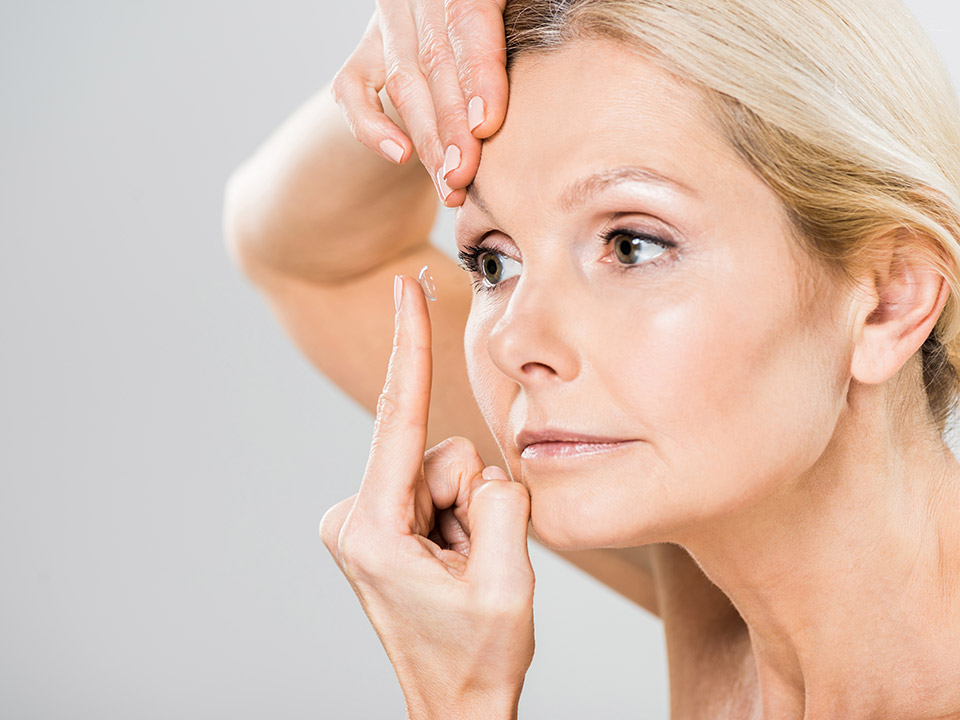Why Do My Contacts Hurt? 6 Possible Reasons

Anyone who wears contacts wishes that contracts would slip in and out of your eyes effortlessly. However, this is not the case. Many people struggle with putting in and taking out their contact lenses, from teary eyes to pain and irritation.
Sometimes, the contacts feel like a scratchy, woolen sweater rubbing against your eyeball. This is enough to make you avoid the contacts entirely and settle for glasses. However, you should not be too quick to give up.
Below, you will find helpful tips on resolving irritation and pain when putting in, wearing, and taking out your contact lenses. But first, we must discover some of the reasons you are experiencing irritation and discomfort.
6 Reasons Why Your Contacts Hurt
1. Dry eyes
Dry eye is a condition that occurs when the eyes do not have enough lubrication because the tear glands are not producing enough moisture. It can happen for several reasons, but the main symptom is the dryness of the eyeball.
Other symptoms include itchiness, red eyes, difficulty driving at night, and stringing mucus in the eye or around it.
Dry eyes make it harder for you to put on your contact lenses. In addition, contact lenses can irritate your eyes even when tear glands produce enough moisture. Therefore, wearing a contact lens with a dry eye makes the dryness worse.
Note that you cannot self-diagnose dry eyes. You will need a professional to make the diagnosis. But if you notice one or several of the symptoms, go to a doctor to give you the diagnosis.
2. Allergies
Another reason you could be experiencing pain when wearing contacts is allergies. Allergy seasons can make your eyes feel like they are burning. Adding a contact lens to the mix does not make it easier.
Allergy triggers such as dust, pollen, and mites make the cells of the immune system release chemicals that cause itchiness and watery eyes. Adding contact lenses to this situation makes it a lot worse.
The contacts can get dander, pollen, and other triggers stuck on them. This makes it harder to put them on without feeling more irritation and pain.
3. Contact lens solution sensitivity
Similar to allergies, you could also be experiencing sensitivity due to the contact lens solution. Some people experience pain, irritation, and watery eyes when the contact lens solution comes into contact with the eyeball.
When this happens, you do not see many changes in your eye. However, this will happen when you use a new type or brand of contact lens solution if it has never happened before. Additionally, you may see some discharge from the eye.
4. Wrong fit
Contrary to what most people think, contact lenses are not one size fits all. People have different eyes; therefore, contacts will not feel good or comfortable on the eyes. In addition, properly fitting contact lenses should be undetectable and not irritate.
If yours do not fit well, it could be causing you irritation. It will feel like something is floating in your eye. For this reason, you must get contact lens fitting from a professional. Otherwise, you will struggle to put them in and keep them in all day.
5. Something on the contact lens
When you first get contact lenses, the doctor will insist on keeping them clean at all times. And you should. However, some people fail at this. Unfortunately, it means getting something stuck on your contact lenses.
Particles on your lenses will cause a lot of irritation to your eye when you wear them or once they are in. Check your contact lenses for anything stuck on the top or underside of the eye. Note that the debris may already be in your eye, and you have to wash it out.
6. Underlying conditions
And finally, you may have some underlying conditions causing irritation when you wear your contacts. The most common issues are:
- Blepharitis. This is a condition that causes inflammation of the eyelid. It caused itchy red eyelids. And because it affects tear production, you will have dry eyes with a greasy or crusty eyelid. This condition makes it hard to put on contacts. You will experience pain and irritation.
- Conjunctivitis. This is inflammation of the outer membrane of the inner eyelid and the eyeball. This condition is also known as pink eye, and it causes redness, itchiness, discharge, crusting around the eyes. This condition makes it hard to wear and keep contact lenses.
- Keratitis. It is the inflammation of the cornea. It causes redness of the eye, blurred vision, and pain. This makes it almost impossible to wear contact lenses. Any contact with the cornea causes pain and watery eyes.
How To Make Your Contacts Hurt Less
Unfortunately, no magical solution makes your contacts 100% pain-free. But there are a few helpful tips that could make them easier to wear and manage.
Keep your hands and contacts clean.
Keep them clean to avoid getting anything on your contacts that could cause pain. Additionally, you should keep your hands clean. Experts recommend washing your hands before putting in and taking out your contacts.
This reduces the chances of getting debris and other contaminants in your eye. Additionally, after taking them out, ensure that you store them properly to prevent contaminants from sticking to them.
Get a better fit.
Next, if the fit is the problem, get a better fit. Always visit a certified ophthalmologist to do your contact lens fitting. This way, you get the lenses that fit you perfectly.
See an ophthalmologist about dry eyes and other conditions.
If you suspect you have dry eyes and other conditions, ensure that you see an ophthalmologist for treatment. The experts will deduce what is causing your dry eyes and find treatment solutions. Additionally, you can get treated for eye-related conditions that make wearing contacts painful.
Change your lenses solution.
If you notice any irritation after using a new lens solution, discontinue use and find another type. An ophthalmologist should guide you into contact lens solutions for sensitive eyes. This way, you can wear your contacts more comfortably.
Your doctor may also prescribe daily, single use contact lenses to avoid issues related to lens solutions allergies, cleaning regimens, and overall comfort. Always follow your doctor’s recommendations on how to use your contact lenses correctly.




